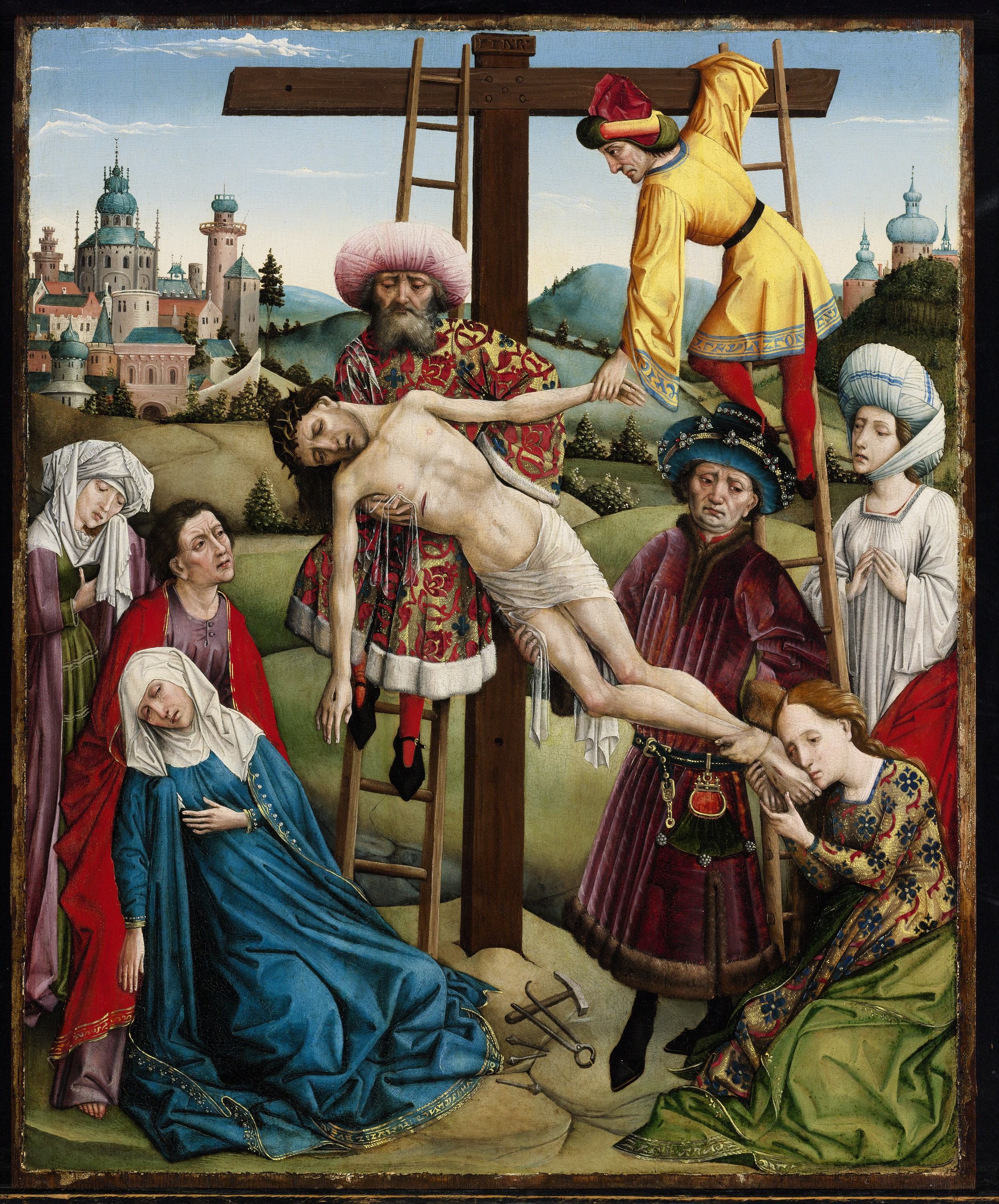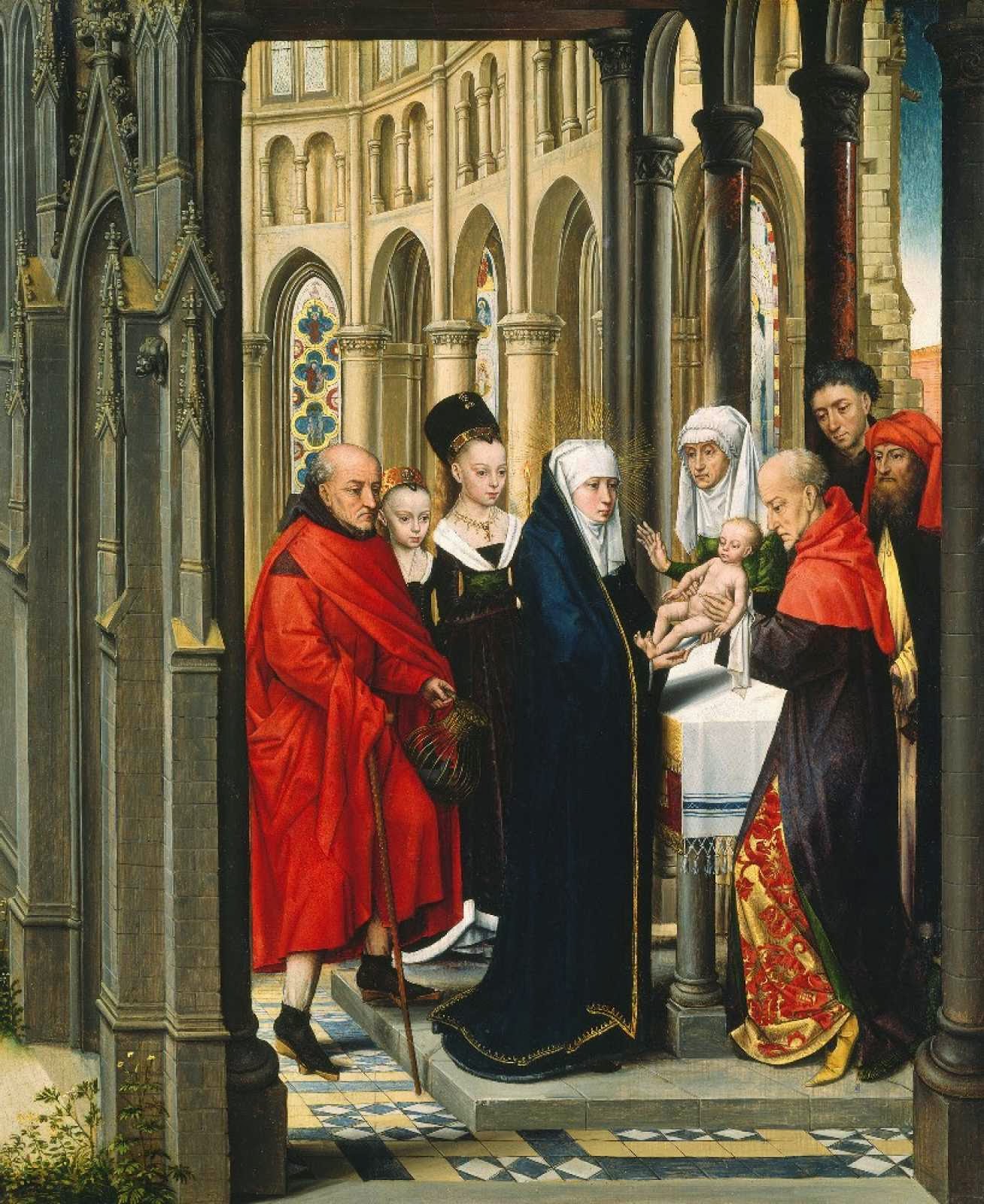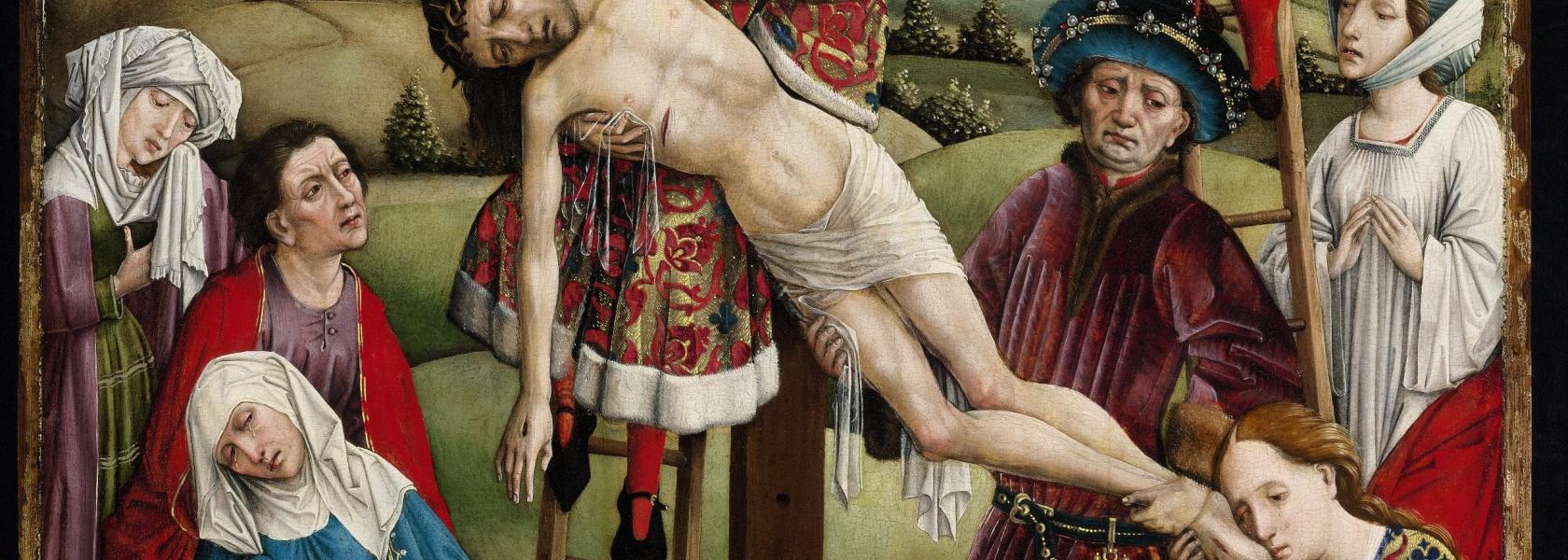
In January 2015 this painting of the Deposition of Christ was presented at a New York auction as 'Circle of Rogier van der Weyden'. The work immediately attracted my interest for a number of reasons: the fresh colours, the virtually perfect condition, the carefully rendered velvet and gold brocade fabrics, and especially the finely drawn faces of Nicodemus and Joseph of Arimathea. My instinct told me that it was a fine example of a Flemish Primitive painting from the late 15th century.

It emerged that the catalogue note - which mainly pointed out that the painting reveals the influence of Van der Weyden's Descent from the Cross in the Prado and that the clothing and male figures are reminiscent of the Master of Flémalle - was based on extensive correspondence with scholars in various countries, some of whom suggested that the painting was produced in Westphalia. Stephan Kemperdick from the Gemäldegalerie, Berlin, was the only one to state unequivocally that it was a Flemish hand, probably that of a Brussels master. Initially he linked the work to the anonymous Master of the Prado Adoration but he subsequently withdrew this suggestion, concluding that a painter from the circle of the Master of the Legend of St Catherine seemed more plausible. He stressed, however, that it was not a 'known hand'.

Naturally I wanted the buyer to receive confirmation of the Southern Netherlandish origin of the panel, since it was on that premise that I had recommended the painting to him.
In the end, the proof I was looking for was delivered through technical research. Dendrochronological analysis of the panel by Peter Klein revealed that it was made of Baltic oak. Since we know that at this time panels made from Baltic oak were only used in the Low Countries, Westphalia could be ruled out as a possible place of production. Although the identity of the artist remains unknown, this brings us a small step closer to unravelling the origin of the work: we can assume that it was made somewhere in the Southern Netherlands around 1470, in a professional workshop on a par with those of the Master of the Legend of St Catherine and the Master of the Legend of St Ursula. In other words, the painting is still anonymous, but more is now known about it. The Descent from the Cross is one of the highlights of the exhibition New Taste: the art of collecting in the 21st century, Rijksmuseum Twenthe, Enschede 2016.


